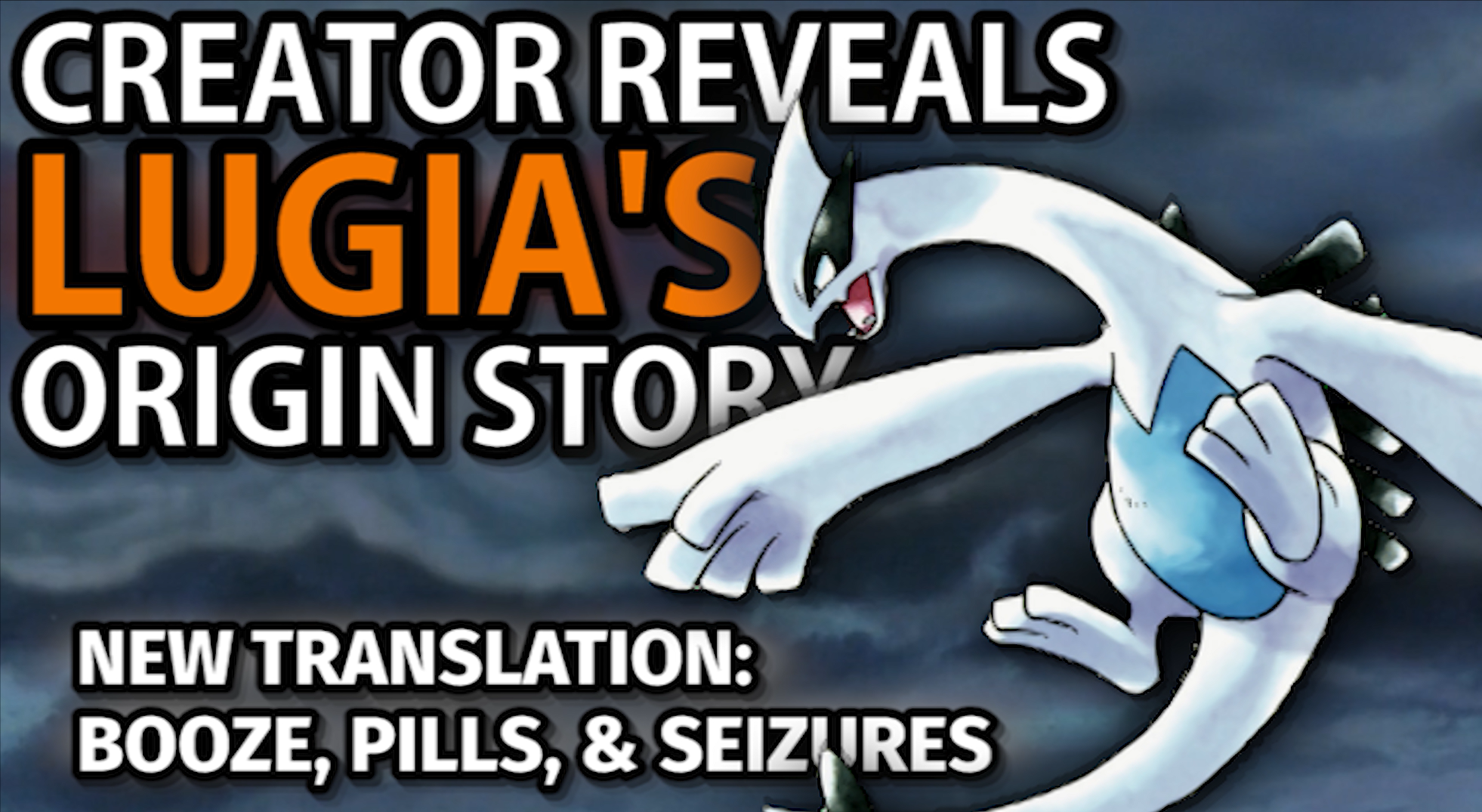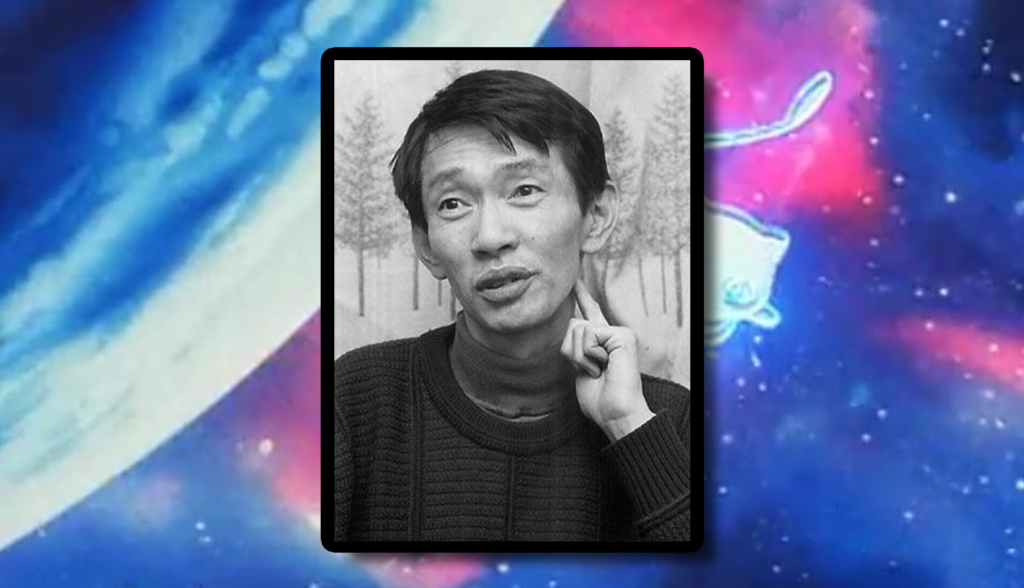
Pokemon’s Head Writer: Booze, Pills, and Ending Ash’s Story
Takeshi Shudo uncensored
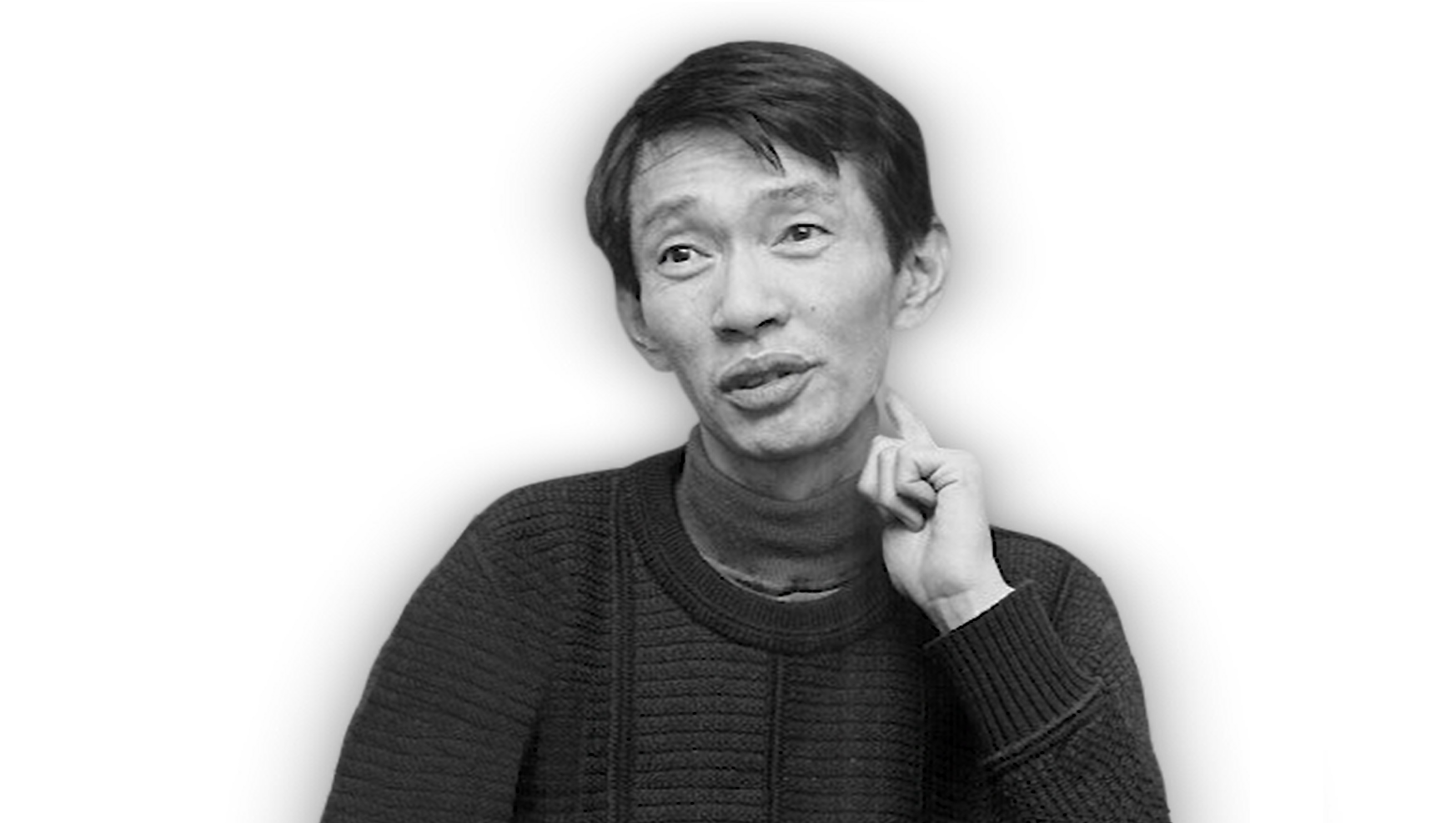
Written by Dr Lava • November 30, 2019
The article below is a translation of a Japanese-language blog post written by Takeshi Shudo on December 16, 2009 — about ten months before his death. Shudo is best known as the head writer of the first 5 years of the Pokemon anime (1997-2002), as well as for the first 3 Pokemon movies.
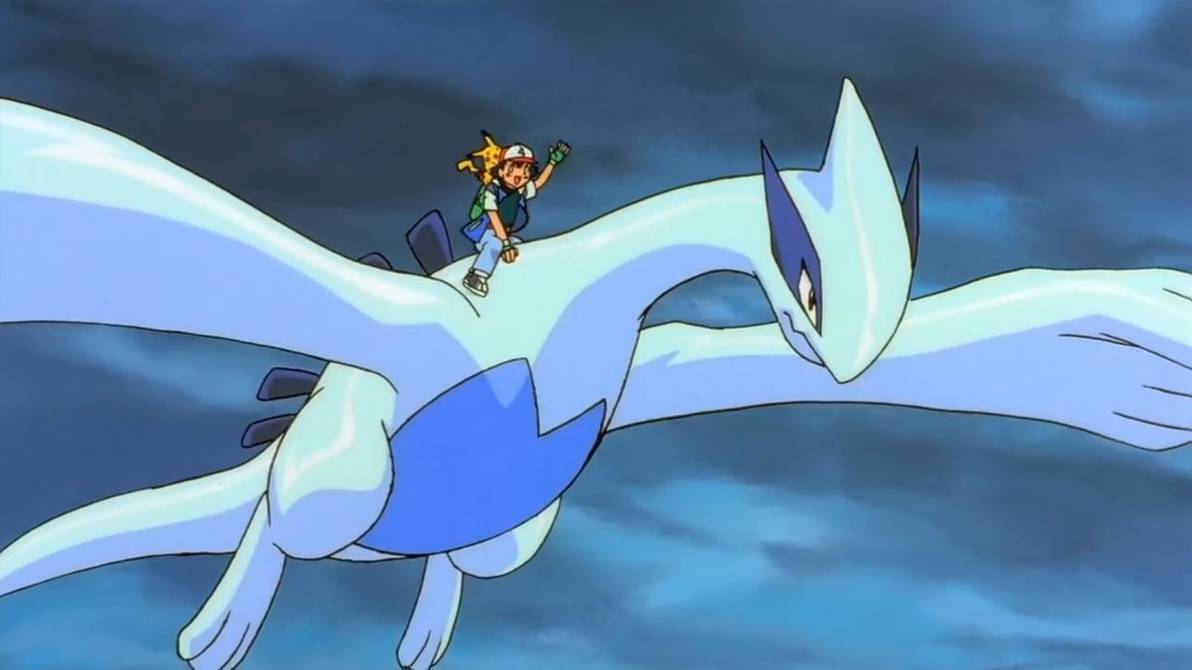
I was initially drawn to this particular blog post because I was told it revealed Lugia’s origin story — so I hired an interpreter to translate it into English. But when I received it back from the interpreter, I discovered it revealed Takeshi Shudo as a troubled writer who relied heavily on alcohol and tranquilizers to fuel his writing process. At one point in this blog post, he says he knows he’s had enough drinks once he’s no longer certain that 1+1 equals 2. But perhaps more importantly, this translation also reveals how Shudo wanted to end Ash’s story, as well as lots of other ideas he had for the series that never ended up becoming reality.
After having this one blog entry translated, I went through all 225+ of Shudo’s blog posts and had everything he ever said about Lugia translated into English. All that information will be the focus of a future video on my YouTube channel. But this article will mostly just cover the topics discussed in Shudo’s December 2009 blog post, as these are really two separate stories.
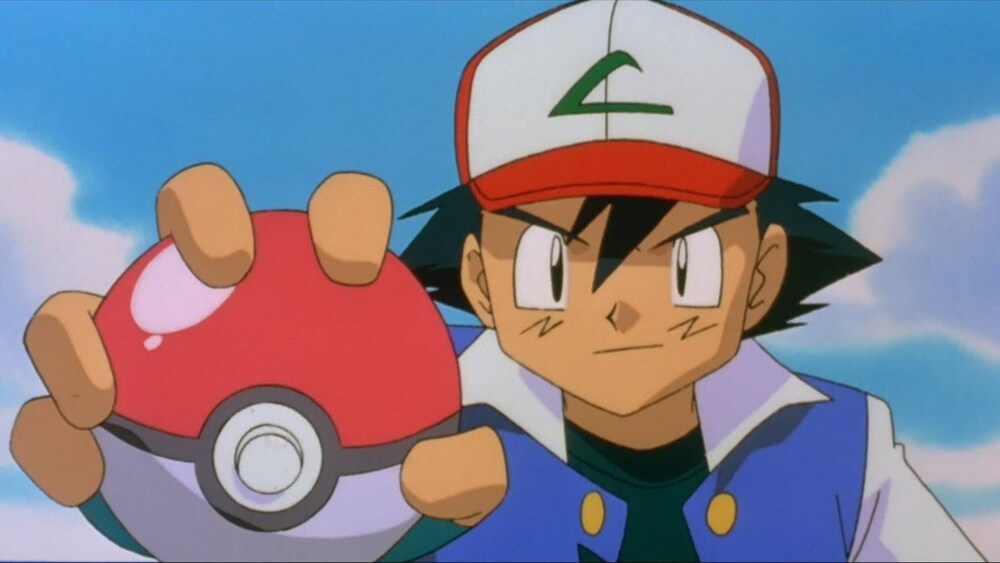
What This Translation Reveals
As you read the following translation, you’ll hear about how the first 5 years of the Pokemon anime were written under heavy influence of alcohol and tranquilizers. You’ll also hear how Shudo took the story of Pokemon to places it never would have gone without him, as well as some places he wanted to take the story, but the Pokemon Company wouldn’t let him. And you’ll also hear about how the famous seizure-inducing Porygon anime episode indirectly affected the future of the series. Shudo also talks about writing the script for the second Pokemon movie. Even if you’re not particularly interested in the film, I think it’s worth reading in order to provide context for the other topics he discusses.
Okay, so with all that out of the way, here’s the translation.
———-
The Next 10 Years of Pokemon:
Takeshi Shudo: Lugia’s Explosive Birth, as well as the first movie, Mewtwo Strikes Back, were both lucky films to work on from the perspective of a scriptwriter. Because right before Mewtwo Strikes Back, an unfortunate incident occurred — a flashing sequence in the Pokémon anime caused a substantial number of viewers to have seizures. So I think the film management team was so busy dealing with the seizure situation, that they didn’t have time to worry about the script of the first movie.
Mewtwo Strikes Back ended up exceeding all our expectations and became a huge hit. This led the film’s main producer to say, “I have some concerns about certain aspects of the first movie, but since it was such a huge success, I won’t interfere with the second one. I just want you to put ‘Explosive Birth’ in the title.”
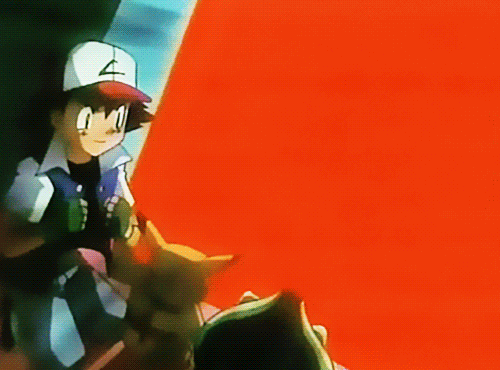
Dr Lava’s notes: Airing in December 1997, the 38th episode of the Pokemon anime — titled Dennō Senshi Porygon (Cyber Soldier Porygon) — featured a scene in which Pikachu uses Thunderbolt on a cyber missile, at which point the screen rapidly flashes red and blue. This incident became known as the “Pokemon Shock,” and reportedly led to 685 Japanese viewers being hospitalized. After the incident, all episodes of the Pokemon anime were removed from Japanese television, and the show didn’t return until four months later.
While Shudo recognizes the Pokemon Shock as an “unfortunate incident,” he also realizes what it meant for him as a scriptwriter. With his bosses preoccupied with managing the Pokemon Shock’s fallout, Shudo was subjected to far less supervision while writing the script for Mewtwo Strikes Back. The end result was a much darker movie than probably would have been produced if the Pokemon Shock had never occurred. In case you don’t recall — the film begins with Mewtwo gaining consciousness in a laboratory as a clone of Mew, experiencing mental anguish over the state of his own existence, then almost immediately killing all the scientists who created him.
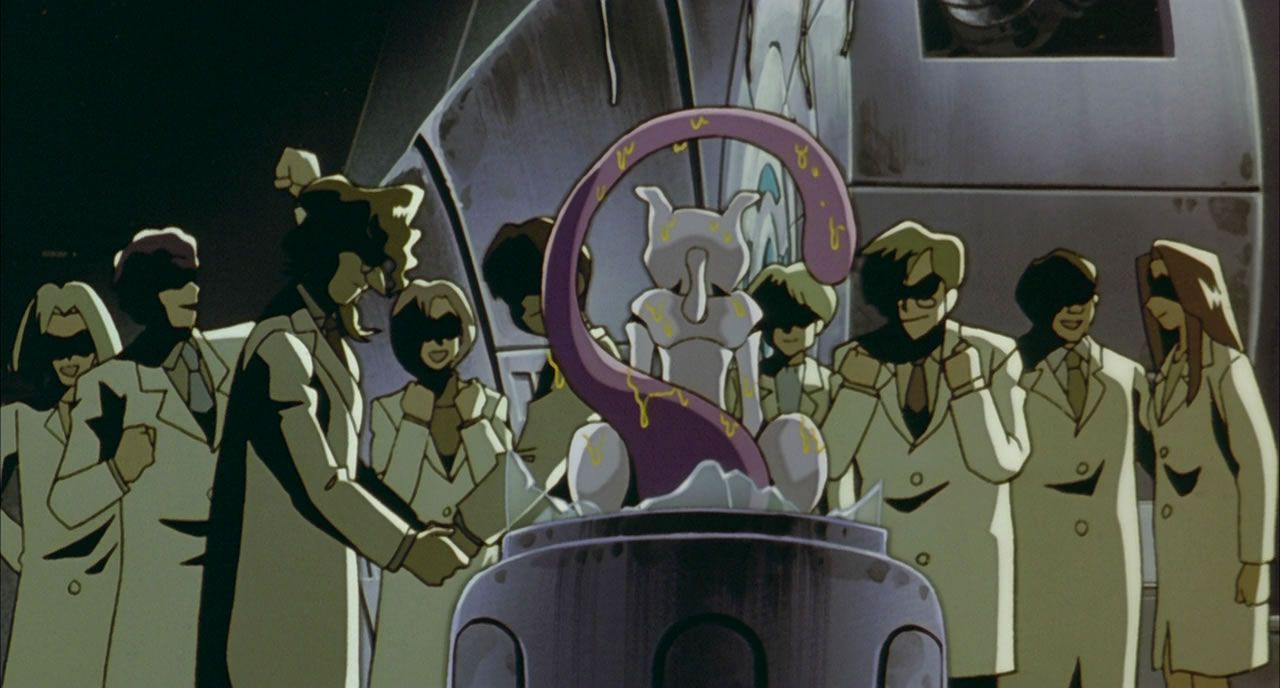
On a budget of just $5 million, Mewtwo Strikes Back debuted in July 1998 and earned over $170 million. At the time, it was the highest-earning Japanese movie to ever hit US theaters. In light of the film’s massive success, Shudo’s bosses — who almost certainly would have pushed back on the film’s darker elements if they hadn’t been distracted by the Pokemon Shock — granted him near-total creative freedom in writing the script for the second movie. He considered himself lucky in that regard, but as you’ll soon read, he “got carried away.”
Takeshi Shudo: I mentioned this once before — during a big meeting (in which even game development and distribution staff participated), the name “Lugia” was chosen by a majority vote. Since Lugia was a Pokémon I created myself solely for the new movie, I was surprised it ended up getting used later in the games and TV show. I can only imagine what was going on in the game development and TV show departments.
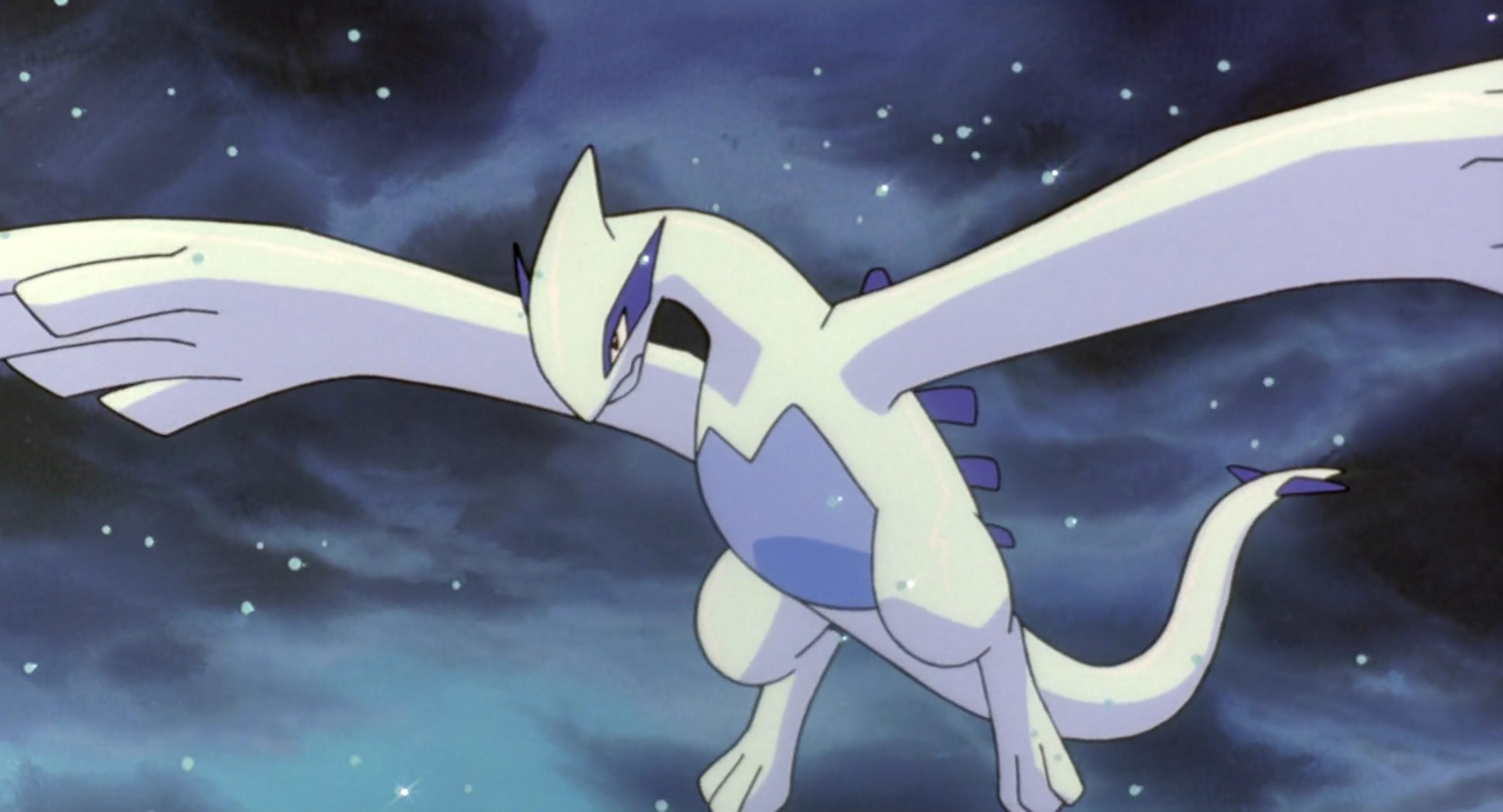
Dr Lava’s notes: Some Pokemon were created by Game Freak’s design team with the anime in mind — like Audino for example, as explained by Ken Sugimori in this 2011 interview explaining the design origins of Gen 5 Pokemon. But Lugia appears to be the only Pokemon created by Shudo, or any of the anime writing staff for that matter. Interestingly, it seems the creative freedom afforded by the Pokemon Shock may have indirectly led to Shudo getting the chance to create a Pokemon of his own. The fact that Shudo wasn’t expecting Lugia to be included in Gold and Silver makes the whole situation even more interesting.
Shudo says that Lugia’s name was selected by vote at a big meeting. However, Lugia doesn’t have any meaning in Japanese, so it’s unclear why the name was selected. The most convincing explanation of Lugia’s derivation I found comes from Lugia’s Bulbapedia page, which supposes the name might come from the Latin word “Lugeo,” which means to lie dormant, alluding to the way Lugia lies at the bottom of the sea.
By the way, in Japan the second Pokemon movie was titled Lugia’s Explosive Birth. But its English name was changed to Pokemon the Movie 2000, and it also went by the title The Power of One. I should also note that in all the other Shudo blog posts I had translated, the actual creation process was revealed to be more of a team effort — it seems Shudo mostly came up with concept and character of Lugia, but lots of other staffers including Ken Sugimori were involved as well. It’s pretty complicated, so I wouldn’t recommend using the Lugia quotes in this article out of context. They’re just one tiny piece of the puzzle.
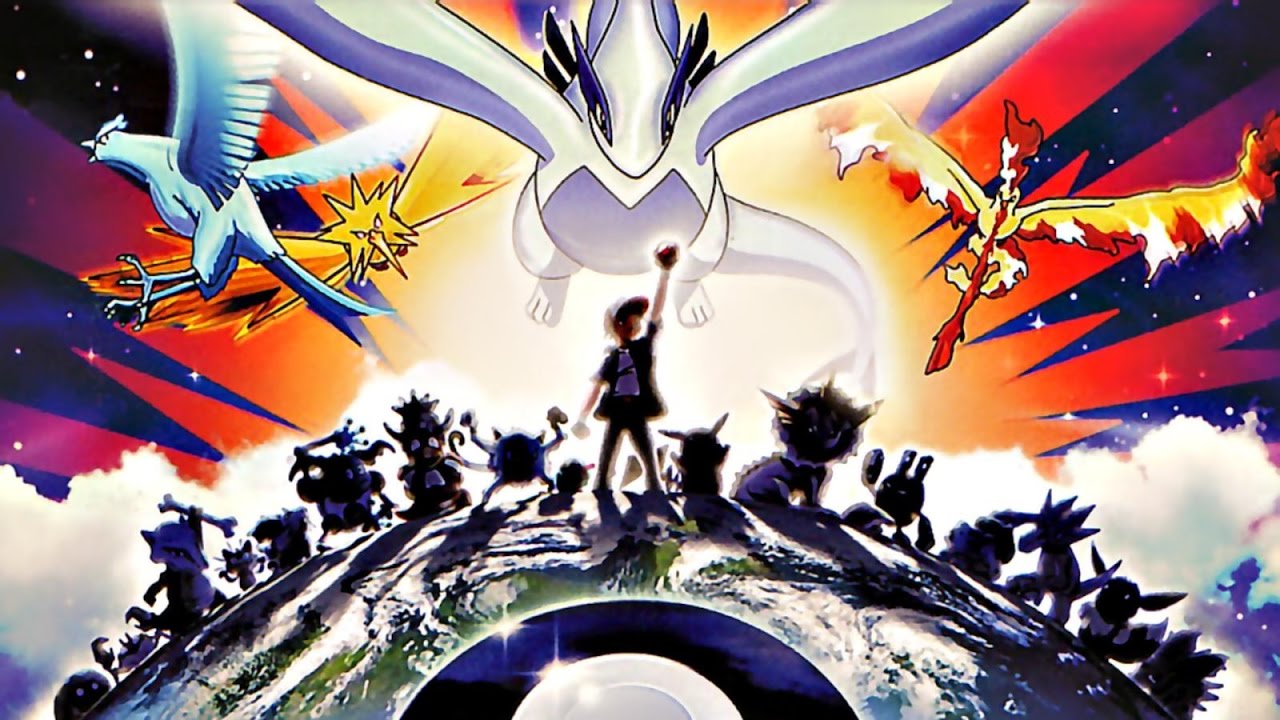
Takeshi Shudo: Looking back — even though the second Pokémon movie was intended for kids — it subtly dealt with topics hardly meant for children, such as “the existence of self” and “coexistence.” Maybe a normal person would think it’s better not to craft a story with such heavy themes, because children wouldn’t enjoy it. But it’s almost like I was possessed when I decided on these themes — I just gave in to the temptation. I should point out, I’ve never been the type to write so-called “children’s stories.” In any case, writing Lugia’s Explosive Birth was pretty physically exhausting for me.
I let the staff read the first quarter of the script — I wanted them to get a rough idea of the general outline. In the initial script, there was no Ash and no Team Rocket. The staff pointed this out to me — even though I obviously wrote it that way on purpose — but I ended up revising the script to include all the regular characters from the very first scene. Basically, I let them know that even though I’m the one writing the script, I’m always willing to listen to everybody’s opinions and suggestions. I guess that reassured them, because after that, I was able to finish writing the last three-quarters of the script without anybody asking to see what I was writing.
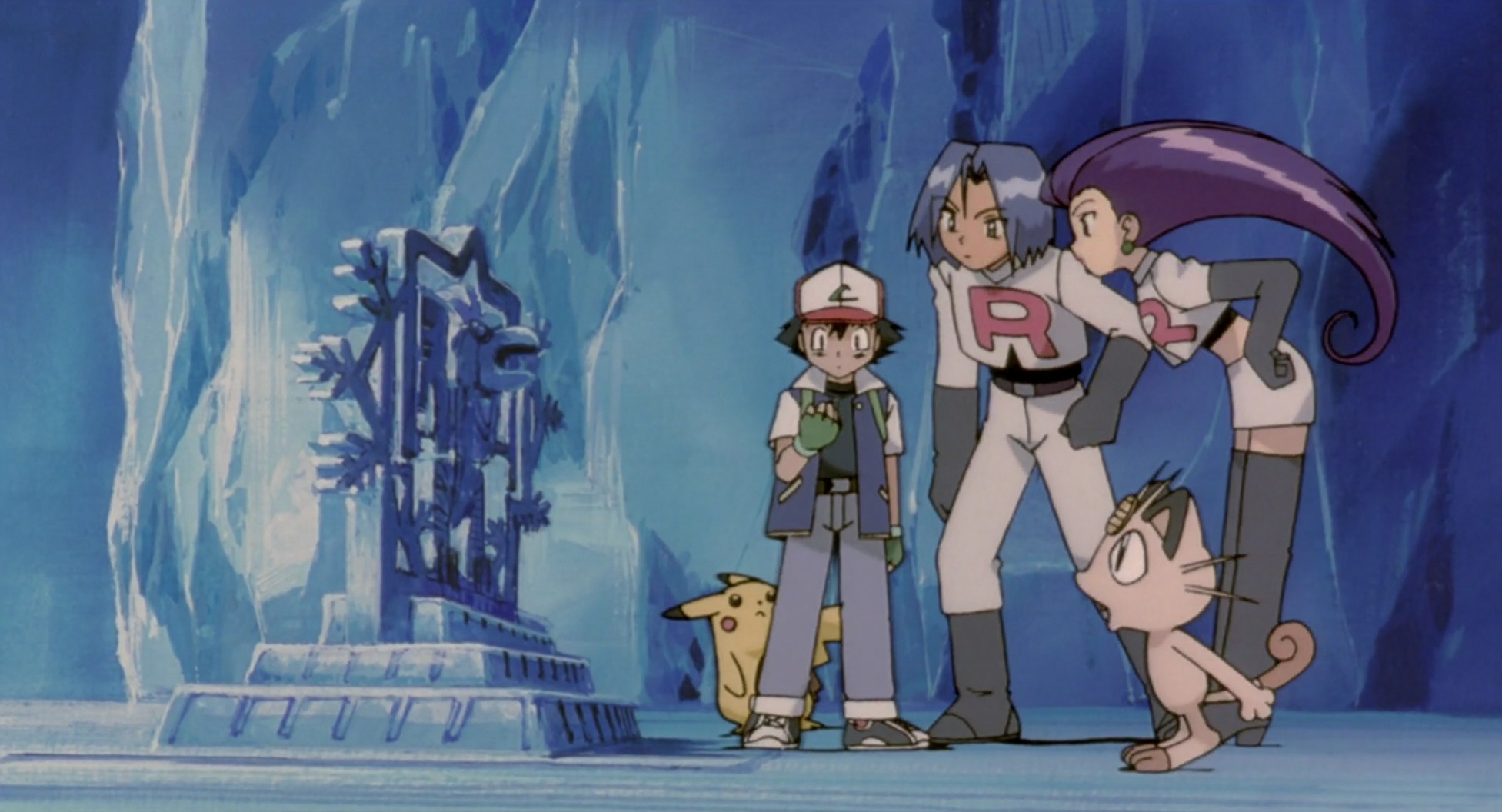
Dr Lava’s notes: “The existence of self” and “coexistence” are two themes that Shudo seems to have been fixated on throughout his writing career. But I’ll come back to that later when he starts talking about his plans for bringing an end to the Pokemon series. It’s worth highlighting just how strange it is that Shudo didn’t include any series regulars like Ash in early drafts of the film’s script. But even though he valued his creative freedom, and was pulling Pokemon in a different direction than the rest of his organization, he was still willing to listen to their suggestions… which is how Ash & friends ended up starring in the film’s final draft.
Takeshi Shudo: For me, the most difficult part was actually that last three-quarters. Typically, when characters become aware of the existence of their selves and realize the differences between them and others, it usually leads to conflict. They split. Lugia’s Explosive Birth runs contrary to what’s typical, showing how you can acknowledge these differences and coexist with each other. “You are you. Other people are other people. It’s obvious there are differences between the two, but if you think this way, and approach other people this way, you can avoid conflict.” You could explain it to a child in such simple terms. But adults always overthink things, and tend to make everything unnecessarily philosophical.
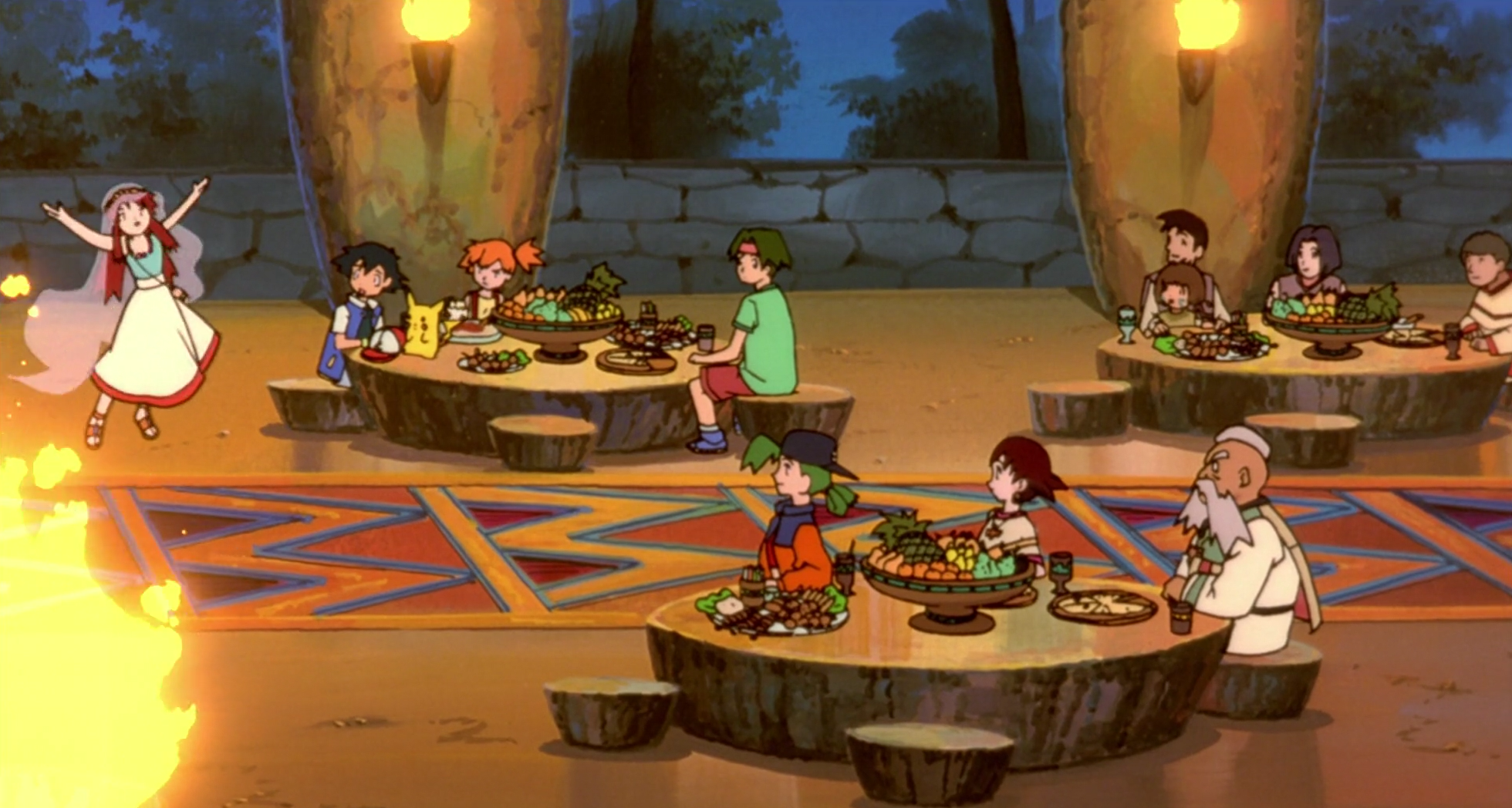
A variety of characters appear in the movie. When I write the characters’ dialogue and emotions, I become them. It’s easy to write dialogue and actions for the types of people I know well. But there are also times when my personality changes to match certain characters. That’s why I can’t show myself to people when I’m working on a story — I get into character and try moving around like them, I mumble their lines under my breath. What makes it even worse is that I’m writing anime, not a story that takes place in the real world. People meeting me for the first time might get scared, thinking I suffer from multiple personality disorder.
But when I was writing Lugia’s Explosive Birth, I got carried away. I used too wide a range of characters — I included too many personality-types that I wasn’t familiar with. A collector, a female ship captain, a former shrine maiden, a modern girl who just became a shrine maiden, an elderly guy passionate about tourism, and many more… Actually, there were a lot of other characters that I cut out — as a result, they didn’t end up appearing in the theatrical release.
And of course there was Lugia, whose voice is masculine — though in my mind, Lugia has both male and a female sides which intertwine.
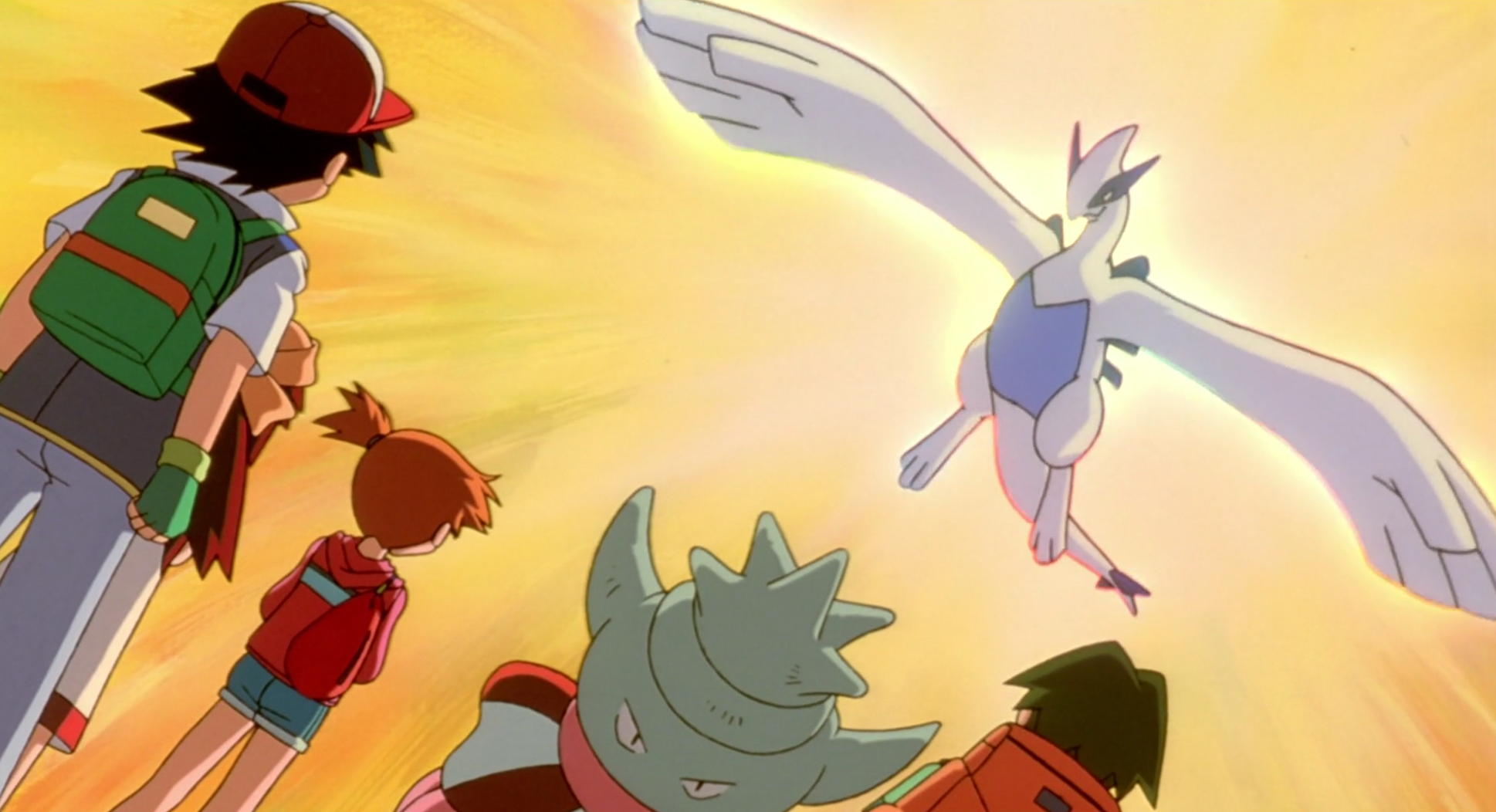
Dr Lava’s notes: It’s interesting that Shudo says here that he created Lugia as a Pokemon who’s simultaneously male and female, because in all his other blog entries related to Lugia’s gender, he grows increasingly obsessive about the fact he intended Lugia as a female. After translating everything Shudo ever said about Lugia, along with information from other developers and even some leaks, I put all that information into a recent YouTube video. You can watch it by clicking here if you like.
By now we’re starting to catch a glimpse of Shudo’s creative process, but it’s from this point on where he starts talking about his heavy reliance on booze and pills. By the way, just 10 months after writing this, Shudo collapsed at a train station in Nara, Japan. He was rushed to a hospital, but was pronounced dead the following day — October 29, 2010. The official cause of death was subarachnoid hemorrhage — which is essentially a brain bleed that according to Wikipedia can be caused by “high blood pressure, smoking, family history, alcoholism, or cocaine use.” We can’t be certain what caused his subarachnoid hemorrhage, but it seems likely it was the years of heavy drinking described below.
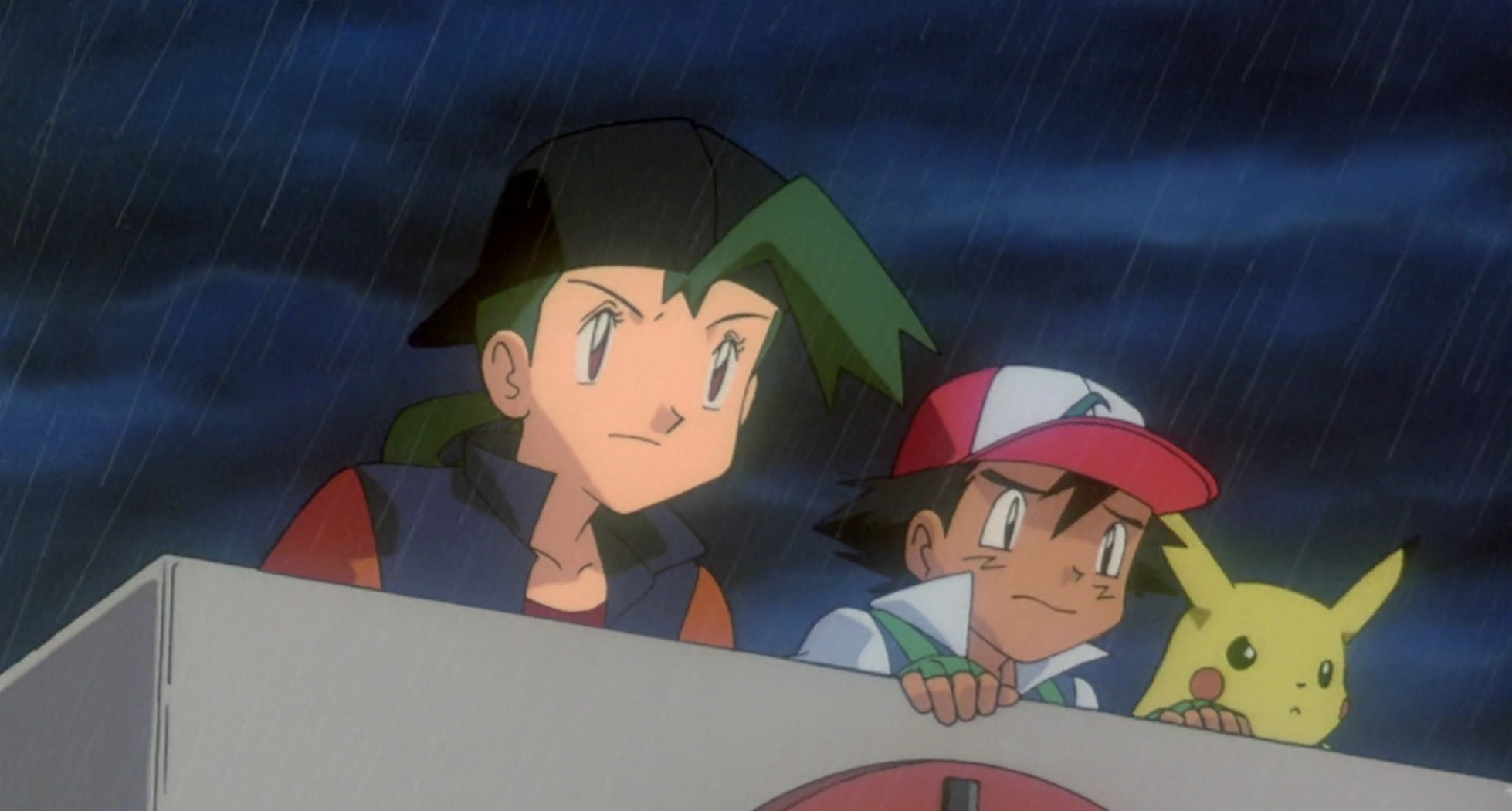
Takeshi Shudo: The characters’ lines are short — and precisely because they’re short, those lines really need to suit their respective characters. But I was totally clueless about how to write dialogue for the female ship captain. So I went drinking at a seaside bar with some fisherman, in order to figure out what fishermen are like. But the experience of being a fisherman differs from person to person — I wanted to get an idea what a female captain is like… but it’s hard to find one in that sort of place. But anyway, once fishermen start drinking, that’s when they really open up and start speaking their minds. So I went drinking with some, even though my doctor’s been telling me to cut back on my drinking.
Alcohol helps me make sense of all the lines of dialogue spinning around in my head, and for clearing my mind when it’s feeling fuzzy and scattered. For some reason, when I’m drinking, I can ask total strangers the peskiest questions and it doesn’t end up in a brawl. We don’t really get into arguments either. It must be this kind of mentality that says, “people are people,” “I am me,” so no matter what someone says, it doesn’t bother you.

If I can’t drink, I take tranquilizers (of course the ones you can normally buy in a pharmacy, not illegal substances). When I get a little bit high, it helps me sort out all my confused thoughts. However, when it comes to alcohol and drugs, you need to know your limit. If you don’t, I advise you stay away from them altogether.
I’m getting a little off-topic here… but I have several ways to check whether I’m reaching my limit. For example, whether I can recite π until more or less 3.1415926535, or if I start to think that 1+1 doesn’t necessarily equal 2, or if I’m still capable of explaining the Fermat’s principle, and lately whether I can explain the Poincare conjecture… When these become difficult, it means I’m drunk. If I get any more intoxicated after that, I won’t be able to think productively, and there’s also the danger of tripping somewhere and hurting myself.
In any case, this is how I meet with different kinds of people, and then the perspectives of various characters come to me in chaos. Then, I try to make sense of them with the help of alcohol and drugs. When I’m writing, I barely eat, so I tend to get dizzy. Of course, before I turn in a script’s final draft, I read it over again when I’m sober. When I get to the point where I think “Okay, I guess this is fine,” I submit the script.

Dr Lava’s notes: So according to Shudo, he was hitting the bottle pretty hard while writing the script for the second Pokemon movie. It’s a pretty big thing to say you’ve reached your alcohol limit when you can no longer remember 1+1 equals 2. And he makes it pretty clear the booze and pills weren’t just used during the writing of this particular script — he was almost certainly under the influence while writing episodes of the Pokemon TV show in the years prior, as well as in the years that followed.

Takeshi Shudo: But in this case it was a movie script, so there was a big meeting with lots of people — which is rarely the case when it’s just a script for the Pokemon TV show. The first comment I heard in the meeting surprised me.
“Which one is the scene that’s supposed to make you cry?”
“The what?”
I never had any intention of including a scene that’s supposed to make you cry. Since [I was young], I’ve been trying not to write scripts that force tears out of people. If someone happens to cry because of my script, they’re not my tears — the tears belong to that individual viewer. These kinds of tears are their treasure.
If a writer is planning “where to make them cry”, “where to make them laugh”, “where to put the spectacular reveal” — it means that writer is guiding the audience’s every emotion. The audience should cry when they feel like crying, laugh when they feel like laughing, and if the film is boring, get bored and walk out of the theater.

“I won’t talk much during the big Pokémon meeting… So, if anything happens, I’m leaving it to you,” I told the movie’s director [Kunihiko Yuyama] beforehand. So when that question was raised, he jumped in and made up an answer. “It’s when Misty saves Ash from drowning.”
I didn’t say anything, but I was pretty pissed — I still remember, even though the meeting was about 10 years ago.
When I look at big Japanese productions nowadays, the scenes that are supposed to make you cry — but don’t affect the plot — really stick out to me. I feel like a lot of movies would be just fine without these kinds of scenes, but the writers go overboard and really try hard to make the viewers cry anyway. I’ll bet that during those production meetings, there’s always someone who asks, “Which one is the scene that’s supposed to make you cry? Let’s put one in.”
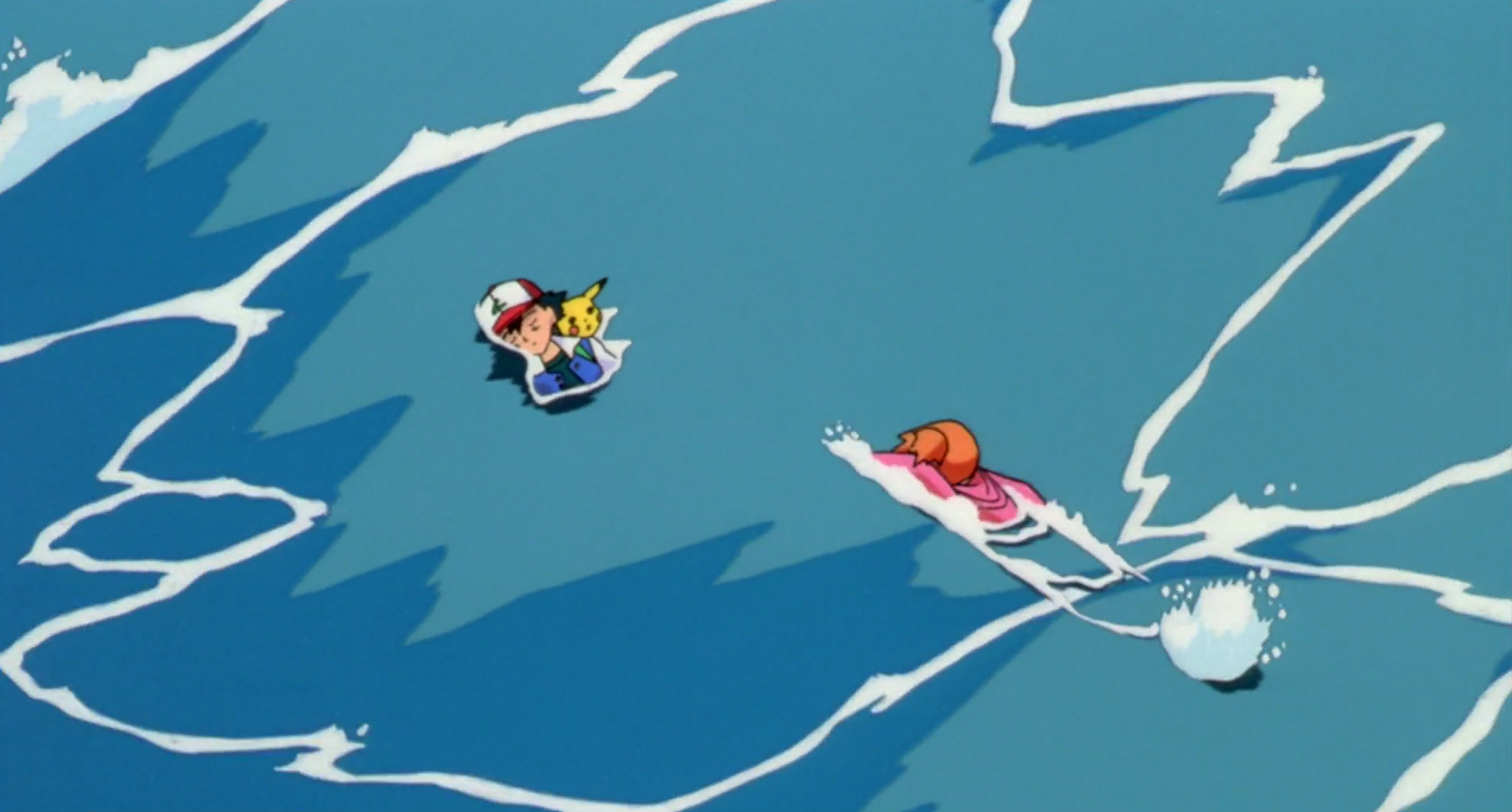
Dr Lava’s notes: Here we get another glimpse of Shudo trying to push Pokemon in a different direction than the rest of the organization. Clearly, many of his ideas made their way into the films and TV show, especially in light of the lack of supervision following the Pokemon Shock. But many of his ambitious hopes for the series’ future were ultimately dialed back or left on the cutting room floor entirely, as you’ll read below.
Takeshi Shudo: In any case, the script for Lugia’s Explosive Birth got approved without too many revisions. Then almost three years passed. But the new game still wasn’t finished, and meanwhile, the anime characters are just wandering around the Orange Islands.
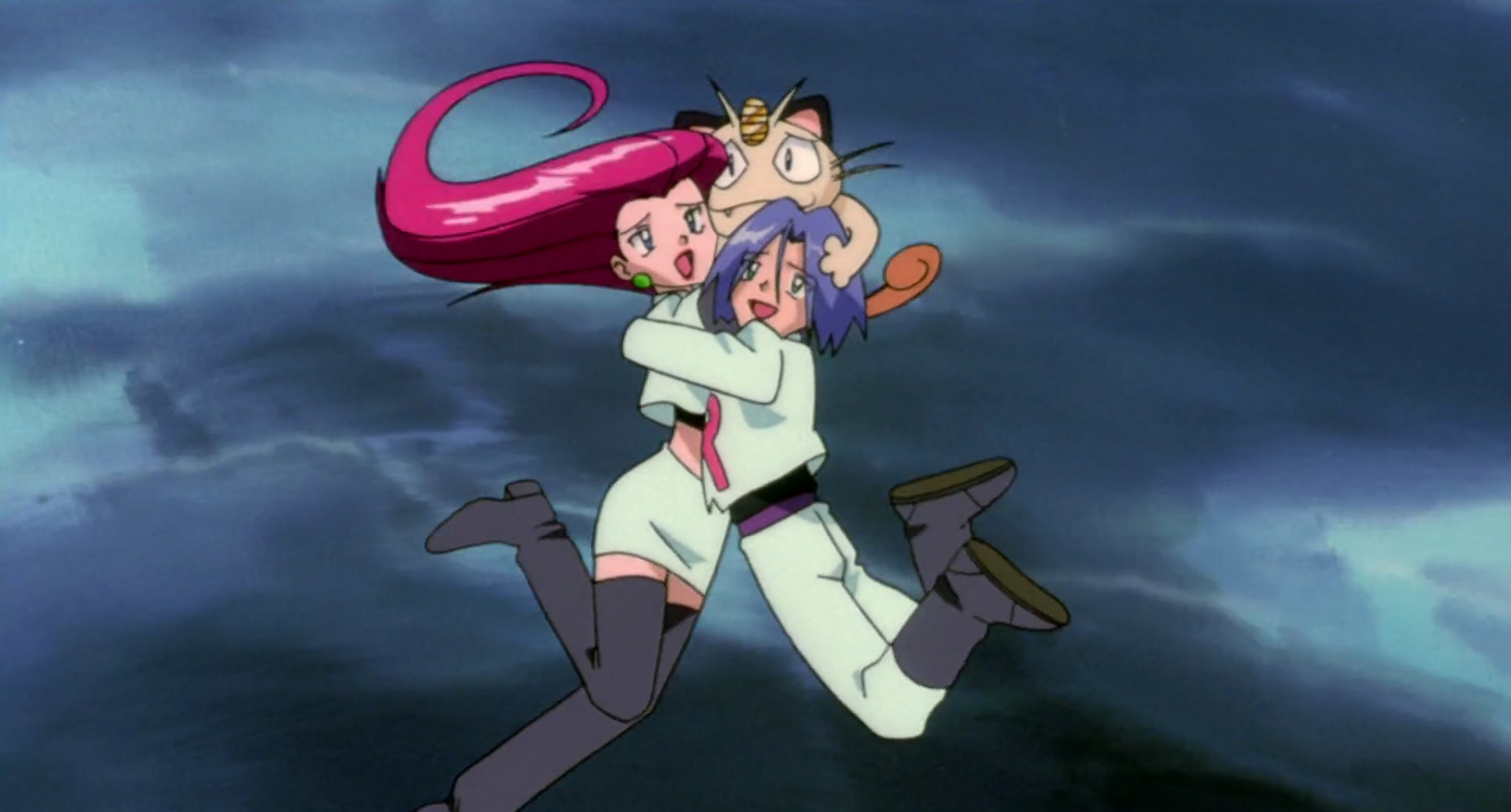
But despite everything, the anime and merchandise all keep selling. But just how long can you go on with the same formula? A new Pokémon appears. Ash catches it. He fights other trainers at a gym or at the League Tournament. Team Rocket tries to stand in his way. He overcomes the obstacle and wins. Looking at it from the production meeting’s point of view: “there’s the scene that makes you cry, there’s one that makes you laugh, there’s the spectacular showy one.” I feel like it’s all just becoming a repetition of this same formula.
For better or worse, there’s no place for the characters to grow. Children grow up quickly. I wanted to create a story that keeps up with their growth. But if Pokémon is doing well, I guess you could say there’s no need to fix something that’s not broken.

But Pokémon is different than Sazae-san or Doraemon. Everyday life that goes on endlessly in Sazae-san or Doraemon are precious, too. But personally, I want Ash to show some development as a character. I want him to one day look back on these past “days of Pokémon” with nostalgia. That’s the entire reason I made Team Rocket, all the Pokémon, Ash, and all his friends interact with each other. I was even planning out the last episode, where they would finally arrive at some kind of a conclusion.
However, even if a writer who’s gotten used to Pokémon — even if he’s able to introduce something new into the typical episode formula… well, unfortunately that’s not something that writer could produce in large quantities. I’m not capable of writing episodes like that in a moment’s notice — episodes that show Ash and his friends growing up.
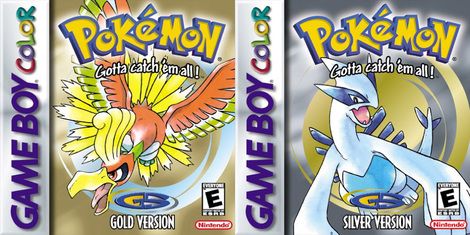
Dr Lava’s notes: Pokemon Gold & Silver were delayed and took much longer to release than originally planned, and apparently Shudo and other insiders were feeling some anxiety. It seems Ash & friends were just killing time in the Orange Islands — essentially waiting for Gen 2 to launch — and Shudo felt the characters had fallen into a predictable rut. But despite the lack of character and narrative progression, Pokemon games and merchandise continued selling in massive quantities.
Shudo didn’t expect the Pokemon franchise to last much longer, and he was already planning how to bring its story to a close. In a blog entry about six months earlier, he revealed what he’d originally had in mind for bringing Ash’s story to a conclusion at the end of Mewtwo Strikes Back — and it’s pretty heavy. Here’s a translation:
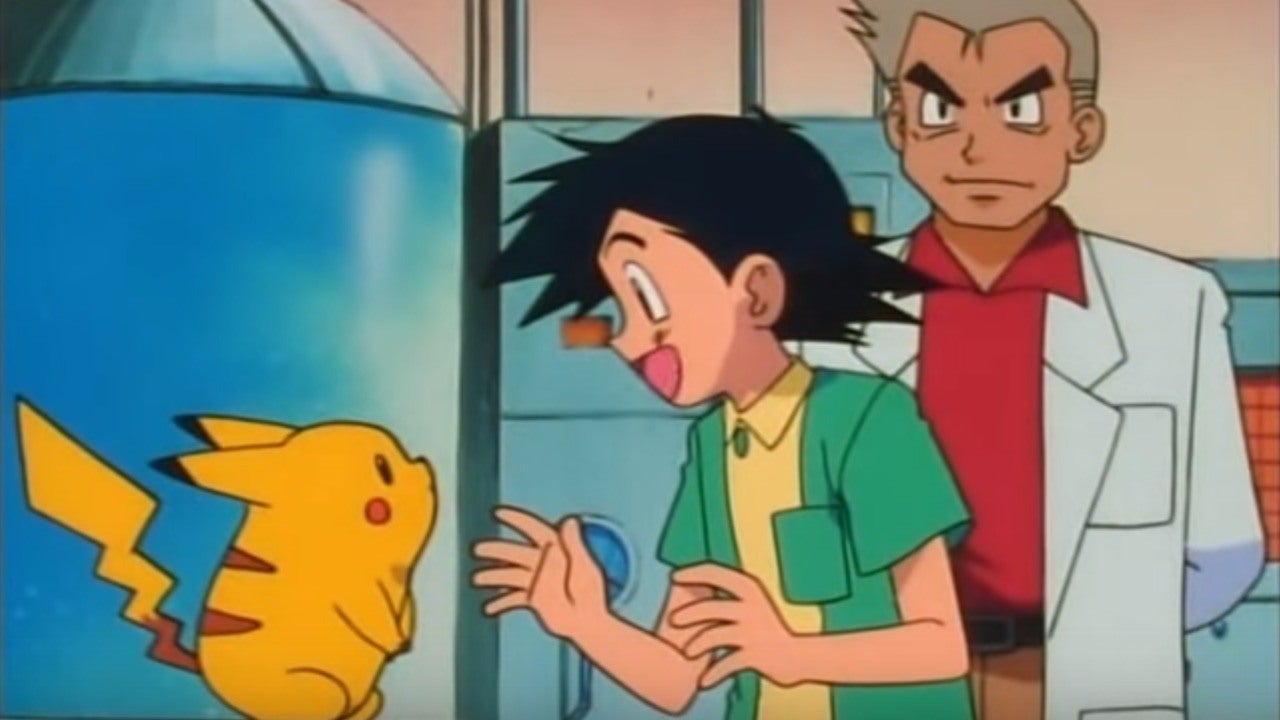
Takeshi Shudo, May 14, 2009: Months and years pass. Ash grows old, then one day suddenly he looks back on his past. He remembers his childhood fondly. The adventures he had with his amazing Pokemon, the friendship, the coexistence.
Maybe Ash wasn’t able to experience these things later in life. However, as a kid there was Pikachu and lots of other Pokémon, Jessie and James, and Mewtwo… And so much more — elderly Ash remembers everything that happened during his adventures as a young boy.
He can hear his mother’s voice. “Go to sleep already, you’re setting off on your journey tomorrow.” The next morning, he is woken up by his mother. He’s a young boy again, leaving his house excited to start a new adventure.
He’s going on a journey not to catch Pokémon or become a Pokémon master, but to discover the meaning of existence, to discover how to coexist with others.
Dr Lava’s notes: That would’ve been a pretty heavy way to end the Pokemon movie. It also would have brought an end to Ash’s story. At the time, Shudo didn’t think the story of Pokemon was meant to continue indefinitely — which explains why he was thinking about how best to end it. A year later in one of the final blog entries before his death, Shudo revealed his plan for the anime’s final episode:
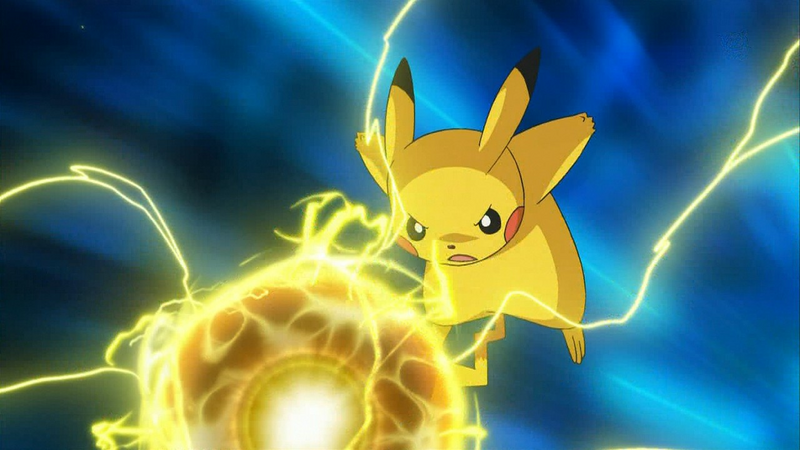
Takeshi Shudo, May 19, 2010: I thought about writing a fourth movie, but I couldn’t come up with any ideas.
If I wrote it, I would have used the story that I had planned for the final anime episode. The Pokémon would stage a rebellion much like Spartacus in ancient Rome. Although at first glance Pokémon appear to be friends with humans, they would realize they’re actually being used like slaves, which would lead to an uprising. Pikachu would become the leader of the revolt and end up fighting with Ash. Team Rocket, who are in possession of lots of sinister Pokemon (including Meowth, who can translate the Pokémon language into human speech) would try to mediate the conflict, but they’d do a poor job of interpreting and only make things worse…
That’s all I came up with. However, an episode like this would break the rules of the Pokémon world and make it impossible for the series to continue. Continuing into perpetuity is the series’ objective. If it could ever be produced, I think it would literally have to be the last episode ever.
I tried to think of a different plot, but I couldn’t.
Dr Lava’s notes: So it seems Shudo actually had two ideas for ending the story of Pokemon — both of which were pretty heavy. It should be noted that Shudo wrote the first three movies, but not the fourth. Okay, so now that we’ve covered Shudo’s ideas for ending Pokemon, let’s continue with his December 2009 blog entry:
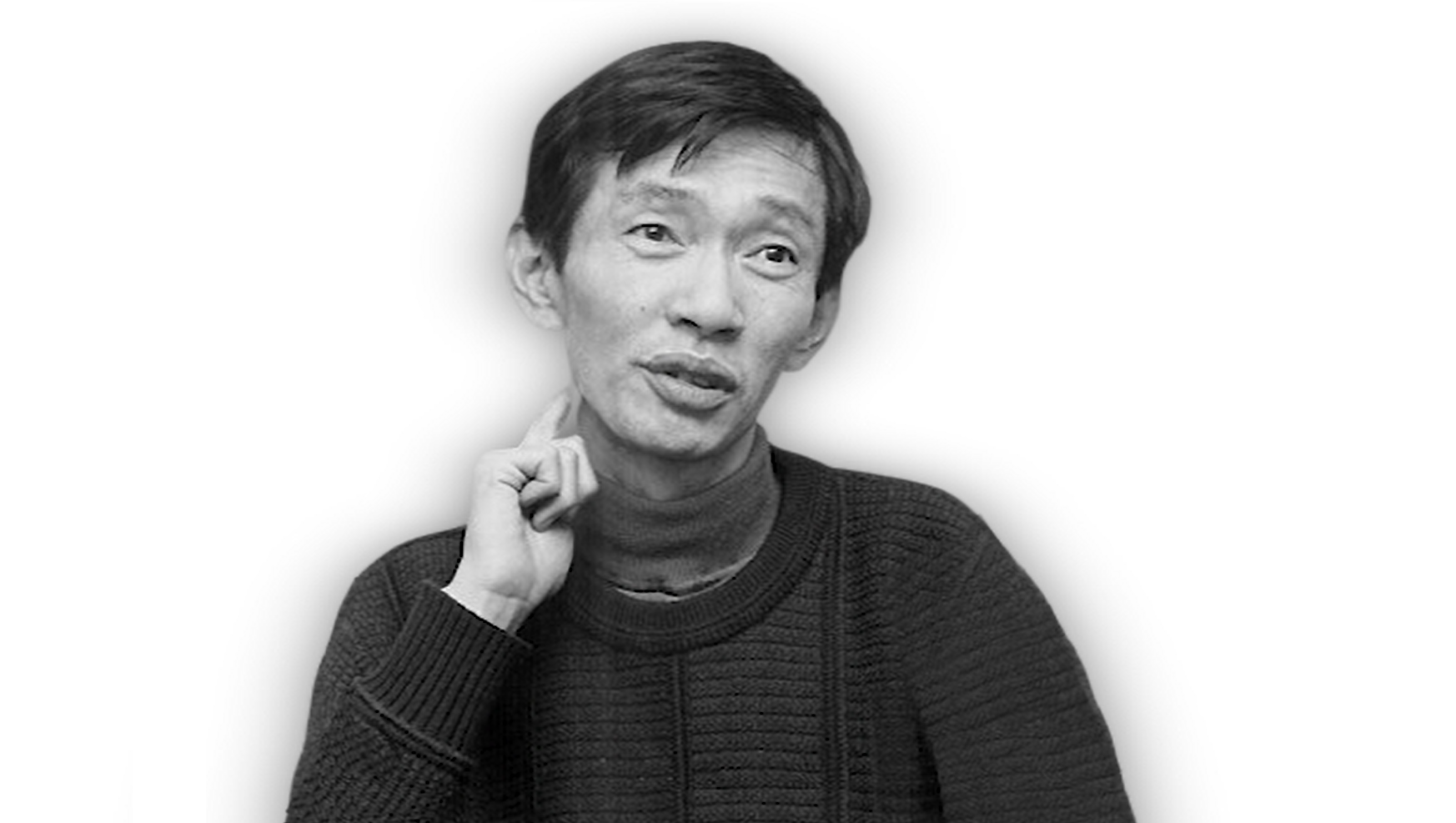
Takeshi Shudo: A couple of days after the big script meeting for Lugia’s Explosive Birth, I was sipping some booze at my home in Tokyo, in a bad mood for some reason. I was irritated with the series for continuing. I realize it’s strange to consider that a problem, especially when lots of other anime are cancelled after only one season. In any case, it seemed like that was the moment to decide the future of Pokémon, which at that point now had two movies. So I called the director and asked him: “How many more years are you thinking this will go on?”
“At least ten,” he replied.
“Two more years is my limit. I don’t think I can create many more Pokémon episodes,” I said.
As I write this blog, Pokémon is now almost 500 episodes long — the series has been going on for over 10 years. Everything happened exactly as the director said it would. It must have been a lot of work maintaining it.
Related Article: Ken Sugimori reveals the origins of 40 Pokemon
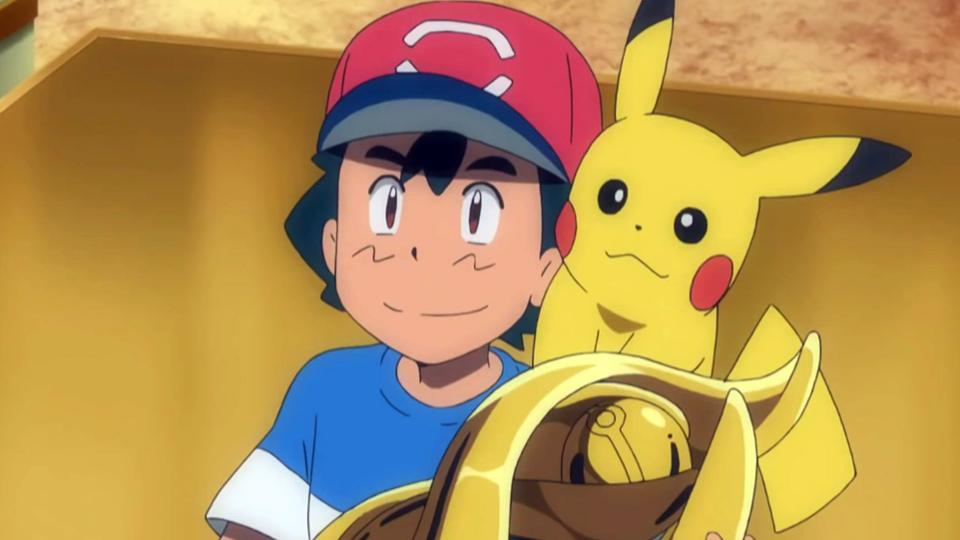
Everything I’m writing here now, they’re just my own simple thoughts. After 3 or 4 years, a new Pokémon adventure with a new main hero should begin. With its own topics — this new Pokémon should adapt to its times. Ten years ago, there was some kid watching Pokémon. That kid’s tastes will change as he gets older, and someday he’ll be an adult bringing his own children to the cinema. Hopefully he’ll watch Pokémon and consider it a movie fit for adults — that would make me very happy. However, if Pokémon stays the same year-after-year, it’s hard to imagine it touching on topics that are relevant with the times. Still, the games and the merchandise have steadily taken root in our everyday lives.
If the Pokémon anime were to end after going on for over ten years, I’m sure the ending would be completely different than how I imagined its final episode more than ten years ago.
After the director told me, “ten more years,” I started obsessing all the time about how to continue Pokémon indefinitely, and at some point I passed out and was taken to a hospital. It was the same facility where one of the girls who suffered from the “Pokémon Shock”, the seizures I mentioned earlier, was hospitalized.
Lying there, I came up with a story for the third movie. Not the The Spell of the Unown, but another vision of Pokemon.
To Be Continued…
———-
Dr Lava’s notes: Ten months later, Takeshi Shudo was dead. He wrote about twenty more blog entries during that time. As I mentioned earlier, he seemed to have become obsessed with Lugia during the last few years of his life. More specifically, he expressed overwhelming regret that he allowed Lugia to be voiced by a man — as “the creator of all life on earth,” he saw Lugia as a “maternal Pokemon.” But like I said earlier in this article, I’ll cover the story of Lugia’s creation, and Shudo’s thoughts about Lugia late in life, in my next YouTube video. But for now, I’ll just leave you with this one quote:
“Advertisements had already been aired. It was too late, we couldn’t suddenly change Lugia into a female… I was gulping down alcohol and drugs. I started to feel like I wanted to die.”

Before bringing things to a close, there’s one more things worth mentioning. You might be wondering about that unrealized idea for the third Pokemon movie. Shudo laid out the plot in a February 2010 blog post. In short, the story begins with Professor Oak and some other researchers discovering the skeleton of a Tyrannosaur Rex. This leads to the revelation that creatures existed on the earth before the age of Pokemon. The T-Rex skeleton eventually comes to life and breeds chaos — and of course, Ash, Misty, and Brock take it upon themselves to save the day. But ultimately, that movie never got made. Instead, Shudo ended up writing the script for a completely different third movie, The Spell of the Unown.

Okay, if you want to read more Pokemon translations, you can find them on this site’s homepage. Like every article published on this website, this translation was funded by my Patreon supporters, whose generosity I greatly appreciate. If you’d like to help support my work on future translations, you can pledge a few bucks a month on my Patreon page — it’d really make a huge difference in helping continue this kind of work into the long-term.
Thanks for reading. If you got this far, here’s a few translation articles you’ll probably enjoy as well.
Related Articles:
• Pokemon Historia: Origin Stories of Gen 5 Pokemon (Part 1)
• Forgotten Story of How Pokemon Blue Launched in Japan
• Beta Pokemon Designs Published in 1997 Japanese Magazine

Note: I edited out about 10 sentences from this Shudo blog translation, in which he goes off on tangents about old anime theme songs, scripts he’s written in the past, and other such matters that are irrelevant to Pokemon. I decided to cut these out because most readers would find them confusing and uninteresting.
